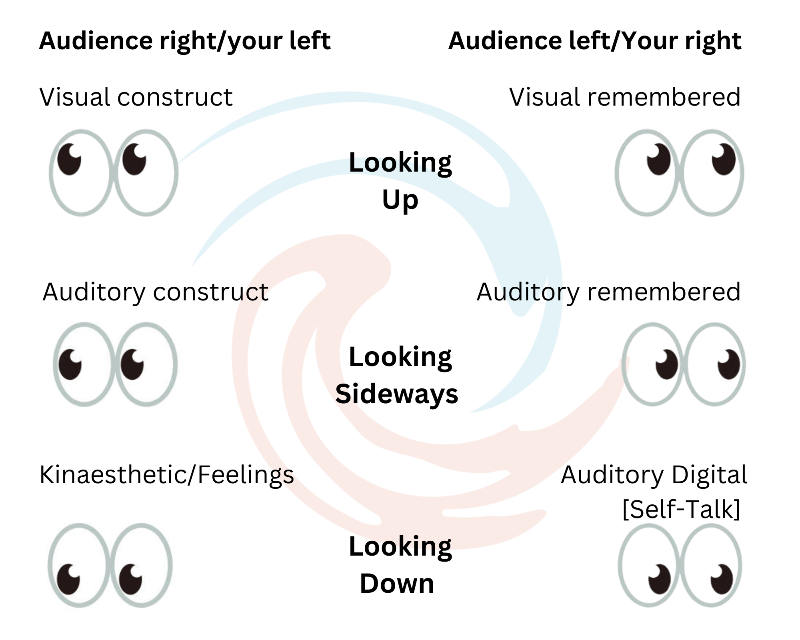I wonder if you’ve ever been talking to someone and wondered what they’re thinking or whether they’re even listening?
I can’t tell you exactly what’s on someone else’s mind, but I am really excited to share a skill that you can learn to know how someone is thinking to inform your response.
Years ago, I recall asking my son to where his book bag was and told him, “You won’t find it up there,” when he looked up and his eyes flicked from left to right.
As a class teacher, I used to query whether children had been listening when they didn’t answer straight away.
This week, I was chatting with Paul, a trainee nurse who had requested a coaching session to get his four-year degree off to a flying start! He has a specific learning difficulty and is already two weeks behind with his reflective journal. Amongst other things, he is required to draw a cell but doesn’t know where to start.
With NLP Eye Accessing cues in my toolkit, I could see Paul actually has a great learning strategy that he had yet to realise. The illustration below shows where most people are likely to look for specific information.

When I asked Paul “What else do you need to do to be on track?” He looked up to his left and talked nineteen to the dozen yet failed to answer my question! So, I asked him, “What are you looking at in your mind? He looked blank, so I queried a list. Although Paul thought he was “probably” looking at a list, I wasn’t convinced. So, I got him to look again and tell me exactly what he was seeing. This time, he again looked up to his right, named some specific workbooks and rattled of some actions as quick as a flash. Furthermore, now he can remember an image of an annotated cell, Paul remembered that he has to label his drawing!
As for the class teacher in me, I now know that if children look up to their left, they are recalling a visual image and if they look up to their right, they are trying to create one.
And, as for my son’s looking from left to right for his book bag, he was searching for the information. When saw where he’d put it (visual remembered) he skipped off to get it. Knowing what I know now, I would never chide, “You won’t find it up there,” because the chances are he (or your audience) will!
My invitation to you this week is to notice the pictures you’re making in your own mind and begin to watch other people to know if they’re remembering or creating.
Eye accessing skills are just one of the communication skills you learn when you attend an NLP Practitioner Course. Find out more below.
